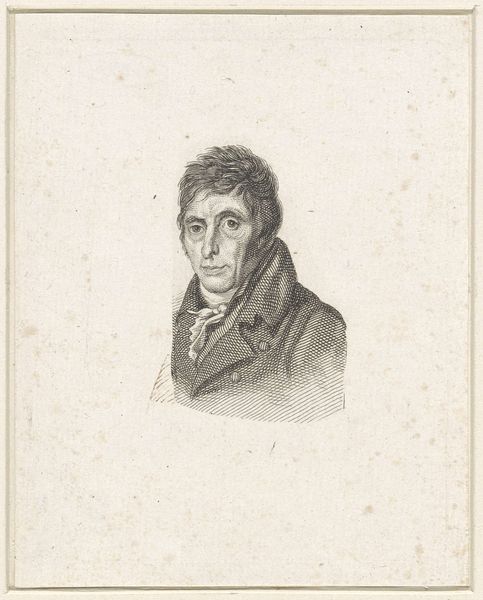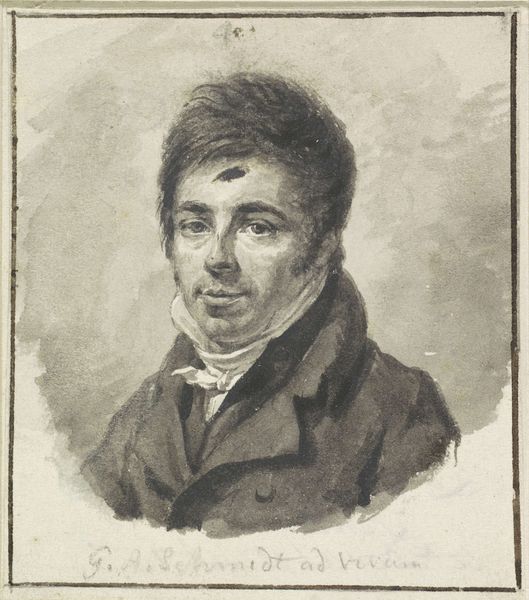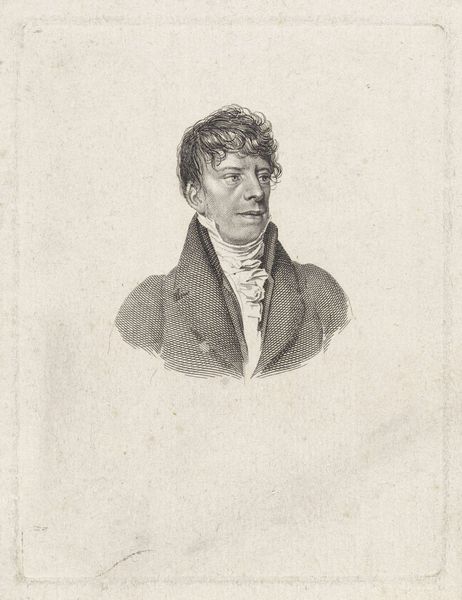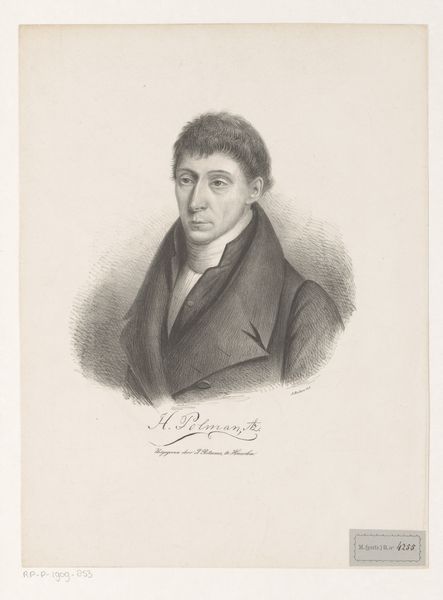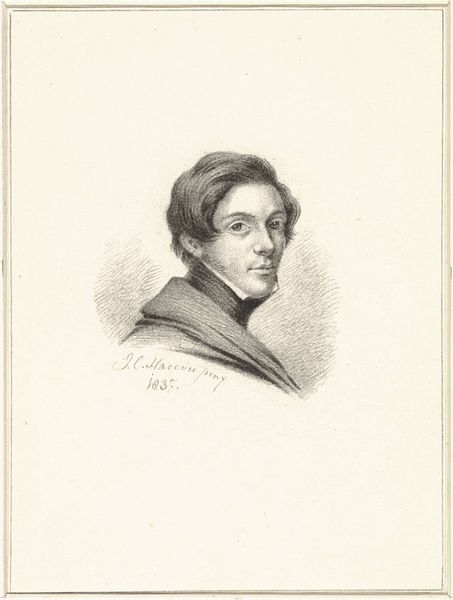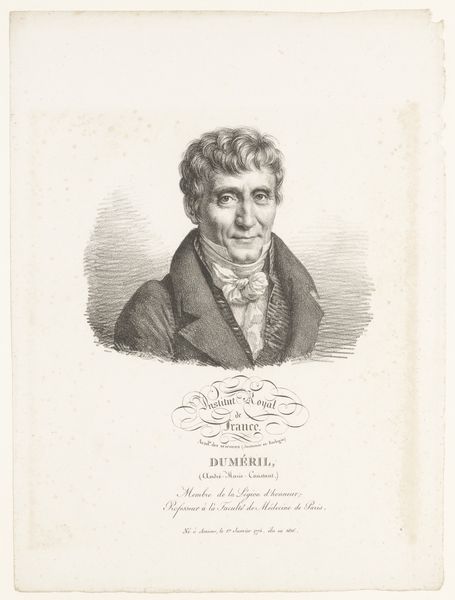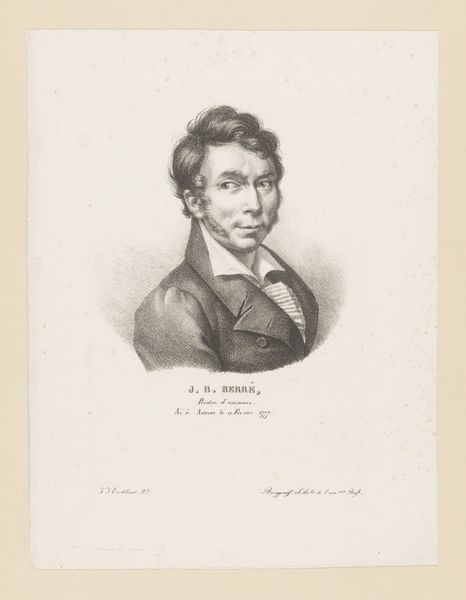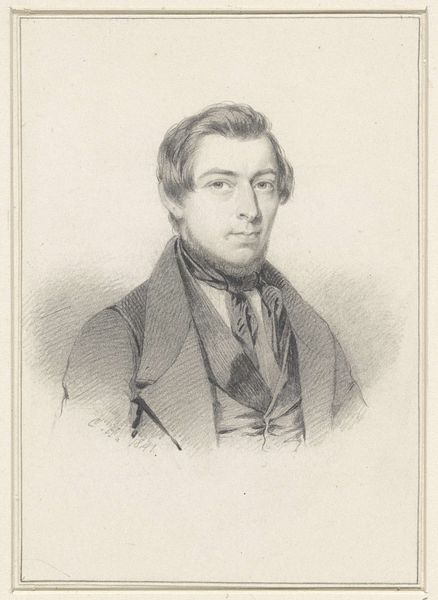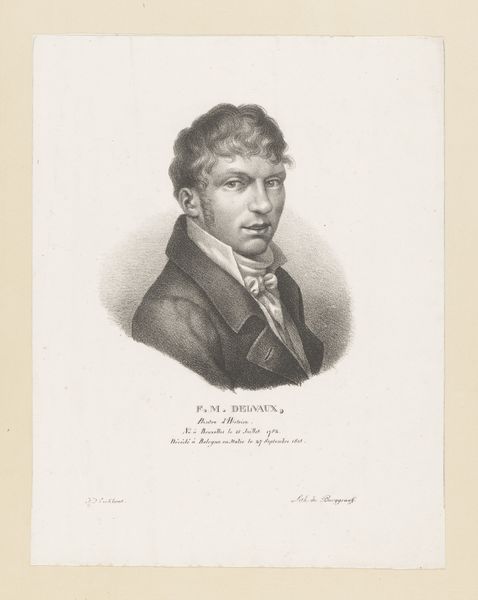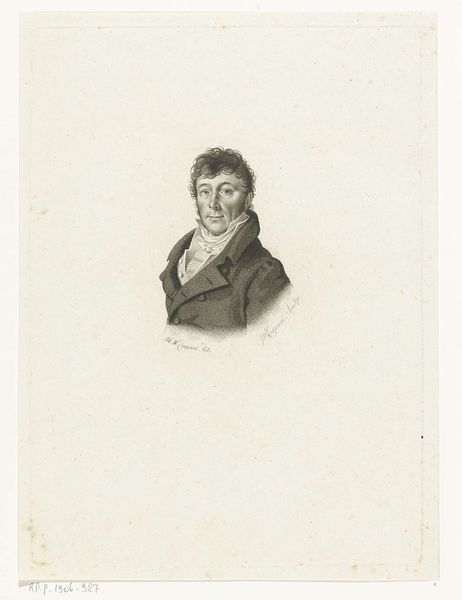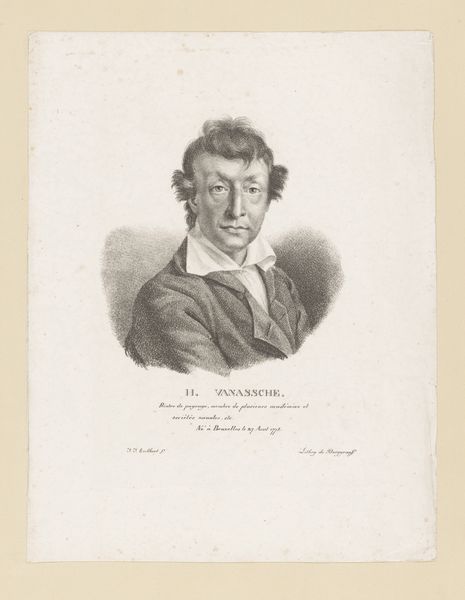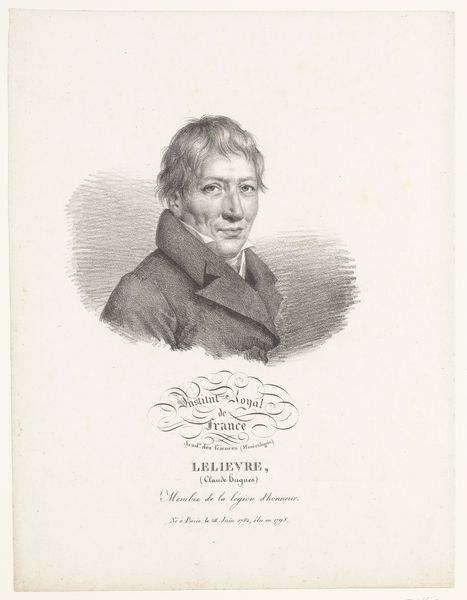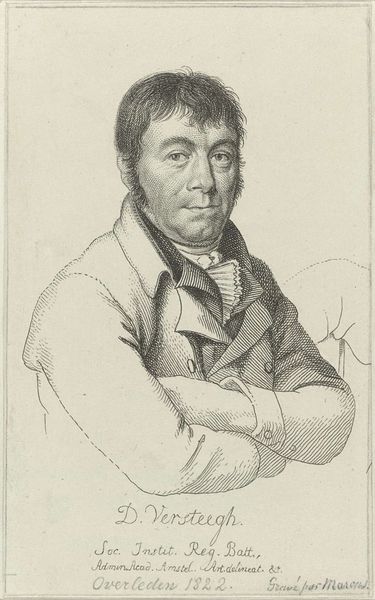
drawing, paper, pencil
#
portrait
#
drawing
#
paper
#
pencil drawing
#
romanticism
#
pencil
#
realism
Dimensions: height 117 mm, width 86 mm
Copyright: Rijks Museum: Open Domain
Curator: This pencil drawing is a portrait of Abraham van Strij by Pieter Christoffel Wonder, created sometime between 1790 and 1852. Editor: The delicate lines lend him such a solemn, almost melancholic air. Do you think that's a fair impression? Curator: Certainly, the restricted palette enhances the overall serious mood. What's most striking to me is the interplay between the industrialization of pencil production in the late 18th century and the enduring tradition of portraiture. Wonder clearly emphasizes line quality and tonal range, demonstrating the evolution of readily accessible and portable drawing materials that democratized the art of making. Editor: That’s fascinating. I'm immediately drawn to the details of his dress: the high collar, the meticulously rendered lapels of his jacket, and even the subtle, knowing expression he gives. All this speaks volumes about his status, possibly his profession as an artist as the Dutch text underneath the drawing indicates his profession "schilderde huisselijke toerneolen enz" implying a painter of domestic scenes. Don't you think his appearance and his gaze hints to a larger narrative about class and profession within 19th-century Dutch society? Curator: Without question. His presentation communicates how artisanal techniques were embraced and used for personal representation even during social change. This challenges conventional notions of what constitutes ‘high’ or ‘fine’ art. Wonder is using easily accessible material culture to document Abraham's presence, creating a space for individual narratives to exist within the societal sphere. Editor: Yes! Furthermore, considering Wonder's detailed portrait captured after van Strij's lifetime opens up another level of interpretation. This likeness acts almost like an idealized symbol—or a memory frozen in time, a representation and perpetuation of personal, and professional standing within that era. It certainly creates layers of understanding surrounding identity. Curator: Absolutely. Studying Wonder’s process highlights the increasing accessibility of artistic media. These pencil portraits demonstrate both his artistic talent, and a pivotal moment in artistic democratization and shifting perceptions surrounding artwork and production during the romantic era. Editor: Precisely, and those materials were specifically chosen to portray this specific individual who the Dutch inscription suggests was an artist specializing in domestic subjects and daily life, making this drawing more layered, representative and deeply sentimental in its intentions.
Comments
No comments
Be the first to comment and join the conversation on the ultimate creative platform.
